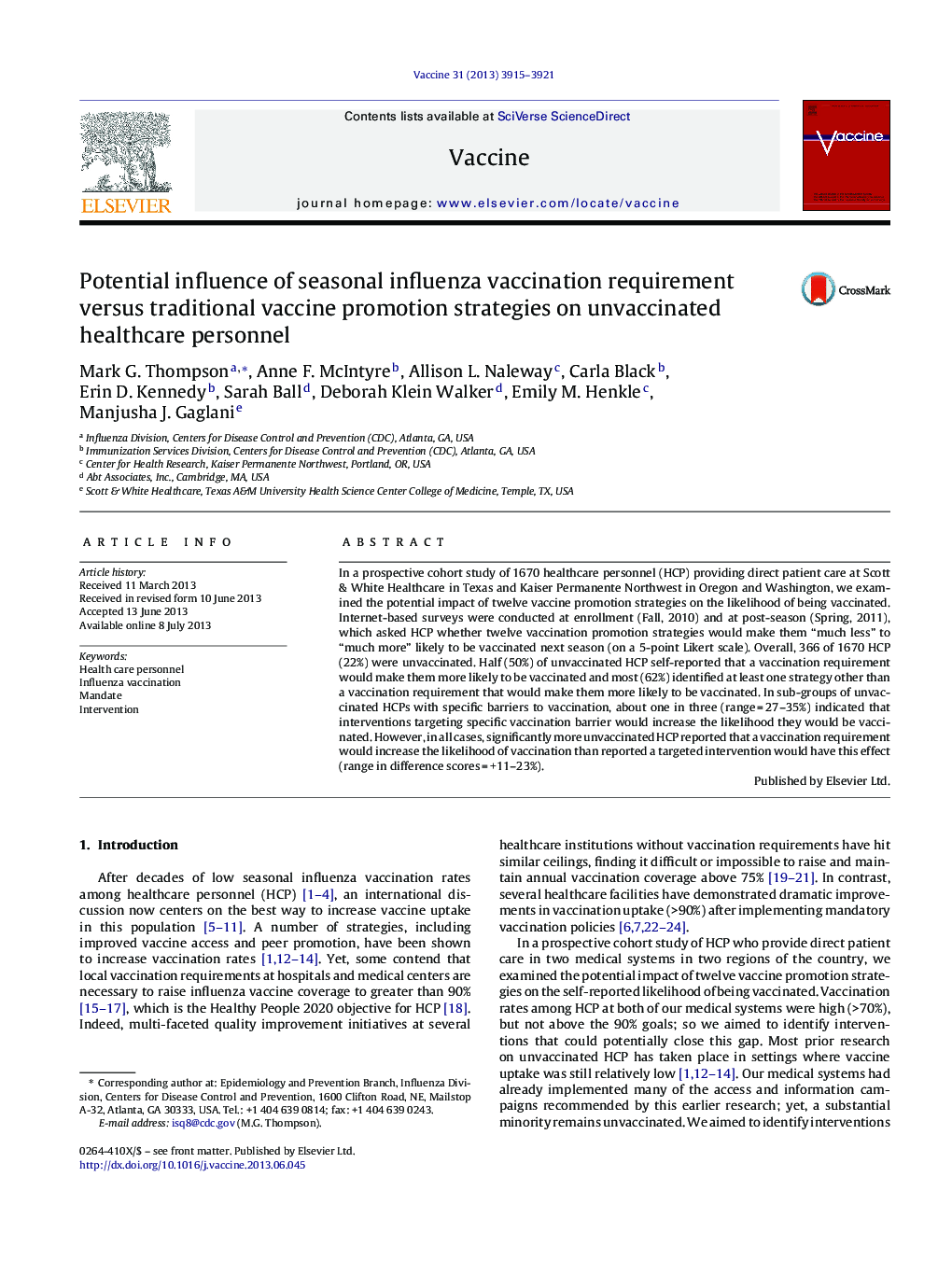| Article ID | Journal | Published Year | Pages | File Type |
|---|---|---|---|---|
| 10966322 | Vaccine | 2013 | 7 Pages |
Abstract
In a prospective cohort study of 1670 healthcare personnel (HCP) providing direct patient care at Scott & White Healthcare in Texas and Kaiser Permanente Northwest in Oregon and Washington, we examined the potential impact of twelve vaccine promotion strategies on the likelihood of being vaccinated. Internet-based surveys were conducted at enrollment (Fall, 2010) and at post-season (Spring, 2011), which asked HCP whether twelve vaccination promotion strategies would make them “much less” to “much more” likely to be vaccinated next season (on a 5-point Likert scale). Overall, 366 of 1670 HCP (22%) were unvaccinated. Half (50%) of unvaccinated HCP self-reported that a vaccination requirement would make them more likely to be vaccinated and most (62%) identified at least one strategy other than a vaccination requirement that would make them more likely to be vaccinated. In sub-groups of unvaccinated HCPs with specific barriers to vaccination, about one in three (range = 27-35%) indicated that interventions targeting specific vaccination barrier would increase the likelihood they would be vaccinated. However, in all cases, significantly more unvaccinated HCP reported that a vaccination requirement would increase the likelihood of vaccination than reported a targeted intervention would have this effect (range in difference scores = +11-23%).
Related Topics
Life Sciences
Immunology and Microbiology
Immunology
Authors
Mark G. Thompson, Anne F. McIntyre, Allison L. Naleway, Carla Black, Erin D. Kennedy, Sarah Ball, Deborah Klein Walker, Emily M. Henkle, Manjusha J. Gaglani,
